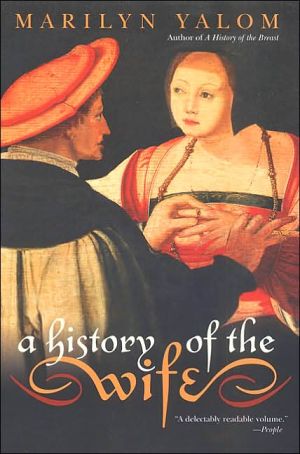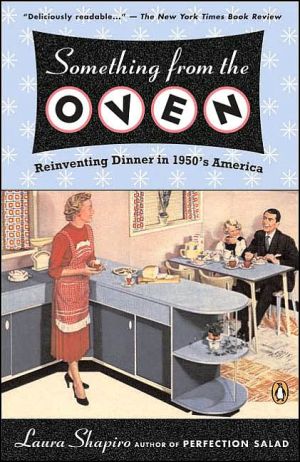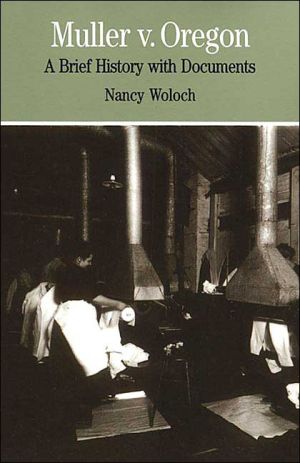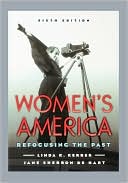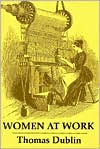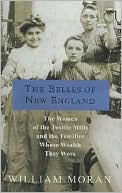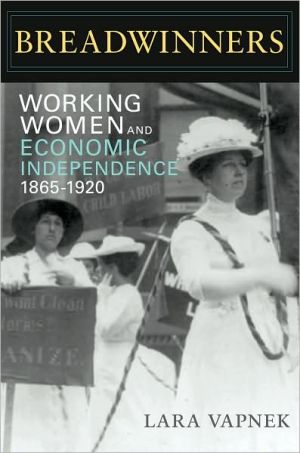History of the Wife
How did marriage, considered a religious duty in medieval Europe, become a venue for personal fulfillment in contemporary America? How did the notion of romantic love, a novelty in the Middle Ages, become a prerequisite for marriage today? And, if the original purpose of marriage was procreation, what exactly is the purpose of marriage for women now?\ Combining "a scholar's rigor and a storyteller's craft"(San Jose Mercury News), distinguished cultural historian Marilyn Yalom charts the...
Search in google:
A History of the Wife is a provocative and comprehensive study of how marriage has affected the lives of women from the earliest days of civilization to the 21st century. Using the modern marriage as a focal point, the distinguished cultural historian Marilyn Yalom charts the evolution of this institution in the Judeo-Christian world and discusses the role it will play in the future.Drawing extensively from diaries, memoirs, letters, legal statutes, and religious practices dating back to Biblical times, this lucid, rich narrative highlights the turning points in the history of the wife: from Ancient Greece, where daughters were given by fathers to husbands as property arrangements to medieval Europe, where marriage was infused with religious meaning; from the ideals of companionate marriage of the Reformation and the Age of Enlightenment to the sexual revolution in America, when a new, international model of spousal relationships emerged.About the Author:Marilyn Yalom is a senior scholar at the Institute for Women and Gender at Stanford University. In 1992 she was decorated by the French government as an Officer des Palmes Academiques, She lives with her husband, the author Irvin D. Yalom, in Palo Alto CA. New York Times Book Review Packed with rich material...
Chapter One\ Wives in the Ancient World\ Biblical, Greek, and Roman Models\ Why should we begin with biblical, Greek, and Roman wives? Because the religious, legal, and social practices of those ancient civilizations provided the template for the future treatment of married women in the West. The wife as a man's chattel, as his dependent, as his means for acquiring legal offspring, as the caretaker of his children, as his cook and housekeeper are roles that many women now find abhorrent; yet certain aspects of those antiquated obligations still linger on in the collective unconscious. Many men still expect their wives to provide some or all of these services, and many wives still intend to perform them. Those women today who rebel against such expectations are, after all, rebelling against patterns that have been around for more than two millennia. It's important to understand what they are rebelling against, and what some of their antagonists-for example, certain conservative religious groups-are trying to preserve.\ Biblical Wives\ The charter myth for the Judeo-Christian wife is the story of Adam and Eve. Ever since their story was written into the Bible (around the tenth century B. C. E.), Adam and Eve have been designated, first by Hebrews and later by Christians and Muslims, as the progenitors of the human race. From the start, Eve has been honored as the foremother of humanity and simultaneously reviled as the spouse who first disobeyed God.\ Initially, as related in Chapter One of Genesis, God created man and woman at the same time. "And God created the human in his image, inthe image of God He created him; male and female He created them."' But by Chapter Two, a new version of human creation had found its way into Scripture, which suggested that Eve was something of an afterthought. In this version, God created Adam first, from the dust of the ground. Then, reflecting on His handiwork, He declared: "It is not good for the human to be alone. I shall make him a sustainer beside him."\ The subsequent account of Eve's creation from Adam's rib has fueled the age-old argument that woman is intrinsically inferior to man and dependent on him for her very existence. Even the Hebrew word icha, or "woman" — from man-suggests this one-down position.\ Eve's story then goes from bad to worse. She follows the serpent's advice to eat from the Tree of Good and Evil, contrary to God's commandment, and then tempts Adam to eat of it as well. These acts have permanent consequences for both sexes: God punishes Eve by inflicting the pangs of childbirth on all mothers and the burden of sweatproducing labor on all men. In addition, it is decreed that the female will be in a subordinate position to her husband for eternity. As God tells Eve after the Fall, "Your urge shall be for your husband and he shall rule over you." Like most myths, this one sought to explain a cultural phenomenon that had been entrenched for so long it seemed to be the will of God.\ But there are other ways of looking at this story, which put Eve in a more favorable light. Some feminists have suggested that Eve was not just an afterthought, but an improvement over Adam. And even conservative commentators recognize that she represented more than a biological necessity The notion of the wife as a man's companion, "sustainer" or "helpmeet" (from the Hebrew word 'ezer) has had a long and meaningful history among Jews and Christians. Indeed, one later commentary in the Talmud (the code of Jewish religious and civil law) sees the 'ezer as providing a moral check on her husband: "When he is good, she supports him, when he is bad, she rises up against him. ,2 And most of all, those arguing for the equal partnership of husband and wife can cite the moving last words of Chapter Two of Genesis: "Therefore does a man leave his father and his mother and cling to his wife and they become one flesh."\ In biblical days, a Hebrew husband was allowed to have more than one wife. For each, he had to give his father-in-law a sum of money, the mohar of fifty silver shekels (Deut. 22:28-29) and then he had to provide for her upkeep. This probably meant that only the affluent could afford more than one. 3 In addition, the groom or his family was expected to give gifts to the bride and her family. Once the mohar had been paid and the gifts accepted, the marriage was legally binding and the bride effectively belonged to her husband, even if they did not yet live together.\ A bride's father would generally give her a chiluhim, or dowry. The dowry consisted of material goods to be used in the future household, including servants and livestock, and even land, as well as a portion of the mohar that reverted to the girl "as payment for the price of her virginity,,4 The specific sum of the dowry would be written down in the marriage contract, or ketubah, as well as the sum of money that would revert to the wife in the event of divorce or widowhood. Jewish marriage contracts going back to the eighth century B.C.E. Usually contained a ritual formula pronounced by the groom to the bride in the presence of witnesses: "She is my wife and I am her husband from this day forth and forever."\ The last stage of the marriage was the banquet that preceded the wedding night. These festivities could go on for as long as a week, though the marriage was consummated the first night. If, however, the husband found that his bride was no longer a virgin, he could have her killed according to the words of the Torah: "then they shall bring out the damsel to the door of her father's house, and the men of the city shall stone her with stones that she die" (Deut. 22:2 1).
AcknowledgmentsIntroduction: Is the Wife an Endangered Species?1Wives in the Ancient World: Biblical, Greek, and Roman Models12Wives in Medieval Europe, 1100-1500453Protestant Wives in Germany, England, and America, 1500-1700974Republican Wives in America and France1465Victorian Wives on Both Sides of the Atlantic1756Victorian Wives on the American Frontier2267The Woman Question and the New Woman2638Sex, Contraception, and Abortion in the United States, 1840-19402949Wives, War, and Work, 1940-195031710Toward the New Wife, 1950-2000352Notes401Credits and Permissions427Index431
\ From Barnes & NobleThe Barnes & Noble Review\ A History of the Wife weaves a complex tapestry as it outlines the roles, customs, and cultural position of women in Western marriage. The work is engaging, filled with interesting anecdotes and stories, and is an incredibly lively read on a thoroughly interesting subject much in need of a closer look. In breadth, the book ranges from biblical times to the present, and in sheer scale it attempts to present a unified series of images of the Western wife over the course of some 2,000 years. In doing so, Professor Yalom has presented us an interesting grid, well conceived and wonderfully written, with which we can begin to examine this cultural phenomenon. \ One of the main strengths of the work is its method: Yalom draws heavily on diaries, newspapers, journals, and personal letters, and she interweaves these with citations from the laws, general customs of the times, religious rites, and civic procedure. By moving in a very fluid way from the abstract to the particular, what we see emerging, in each era, is a lively picture of how the general affected the individual. The book makes it real, makes us wonder, and helps to recover for us so many of the lost voices of women over the centuries, silenced by the overshadowing "great men" approach to history. These are not so much the stories of "great women" as they are the telling of everyday life. In reading them we get a fuller sense of what the time and place may have been like for the women whose voices we are listening to. It is the dignity of these everyday voices that holds us, intrigues us, and invites us to read further. A History of the Wife links the ancient, the medieval, the Victorian, and the modern, and makes a strong historical and narrative case for its subject.\ Along the way, we are treated to many interesting insights, observations, and historical facts: Nero was officially married five times -- three times to women, twice to boys; until the Middle Ages, marriages in Catholic Europe often did not involve any ceremony at all, and "church weddings" do not appear on the scene until well into the evolution of Christian Europe. The role of women changes slowly in the West, and the role of religion, from the biblical period through early Christianity to the changes brought by the Reformation and the voyages to the New World, are mapped for us in a sweeping overview.\ A particularly strong section of the book is the documentation of the last 50 years of the cultural institution of marriage, and the vast changes brought by World War II and the cultural ferment of the '60s. This is made more impressive because of the compelling histories that the work recounts for us in the 2,000 years before our own era.\ An old adage maintained that "everyone needs a wife"; this lively book tells us who followed that adage, why and how they did so, and how we got to where we are now.\ Elena Pinto Simon lives in New York City.\ \ \ \ \ \ Chicago TribunePortrays the gradual but relentless shift from subjugation toward partnership...collating what information is available about how women have spent, and felt about, their married lives.\ \ \ Diane JohnsonMarilyn Yalom's brilliant deconstruction of the married state for women is at once reassuring and shocking...it is perfectly fascinating and explains a lot.\ \ \ \ \ Diane MiddlebrookA deft and savvy companion on this fast-forward spin through the centuries...the book has a voice—slightly marveling, often amused, always engaged.\ \ \ \ \ globebooks.comAn intelligent, articulate and analytic survey of the institution of marriage from its roots in Juedeo-Christian antiquity to the present.\ \ \ \ \ Los Angeles TimesYalom's sweeping history not only offers a clear overview of the role of the wife over the centuries, but also recounts the experiences of specific individuals.\ \ \ \ \ New York Times Book ReviewPacked with rich material...\ \ \ \ \ People MagazineScholarly yet delectably readable volume.\ \ \ \ \ San Jose Mercury NewsYalom diligently pinpoints the historic shifts in marriage...brings to this material a scholar's rigor and a storyteller's craft.\ \ \ \ \ USA TodayA valentine to wives...after reading Yalom's history, one thing is clear: marriage is not for the faint-hearted.\ \ \ \ \ Victoria GriffinA History of the Wife should be required reading for all brides-to-be.\ \ \ \ \ Publishers WeeklyThe voices of ordinary women speak volumes in this sweeping history of women and marriage in the Western world. As with her well-received A History of the Breast, Yalom, a scholar at Stanford's Institute for Women and Gender, moves easily among several fields--feminist history, religion and myth, anthropology, personal narratives, literature, pop culture and sociology--to trace the changing role of wives from ancient times to the present. The general direction of change--from subordinate toward more egalitarian roles--comes as no surprise. What may be unexpected, however, is Yalom's evidence that, while generally conforming to cultural norms, individual marriages throughout history have been more complex than law and tradition may have dictated. Barren wives were sometimes favored over fertile ones, arranged marriages sometimes encompassed deep love and wives' personal "power" could vary considerably. Nevertheless, marriages were hardly egalitarian, even after late-18th-century political ideals proclaimed women to be "co-creators of... new republican societies" in America and Europe. Wives had little legal autonomy; they could not control their own money or even have access to their children in the event of separation or divorce, until equal rights began to be won during the 20th century. Yalom discusses the push for birth control rights, the impact of the depression and World War II and today's two-spouse-income economy and 50% divorce rate. She excels in presenting personal perspectives, including those of working-class wives, immigrants, African-Americans and lesbians. Yet she is less successful in examining wider societal effects, including the impact of high divorce rates. "To be a wife today when there are few prescriptions or proscriptions is truly a creative endeavor," she concludes; true enough, but it's an insufficient explanation for how egalitarian marriages might actually work. (Feb.) Forecast: Stunning cover art, a topical subject and the title's echo of Yalom's previous book should attract many readers in addition to this book's obvious audience of women's studies majors. If Oprah did history, this might be her kind of book. Copyright 2000 Cahners Business Information.\ \ \ \ \ Library JournalCultural historian Yalom (Inst. for Women and Gender, Stanford Univ.) has apparently written the first truly comprehensive history of the Western female spousal experience; indeed, there are precious few long views of either marriage or the family to which this book can be compared. Beginning with the biblical ancients and ending with Bill and Hillary, Yalom concludes optimistically, asserting that the situation of contemporary wives today--and despite disquieting statistics on infidelity and divorce--is at long last less a burden than a collaborative, loving opportunity. Yalom's particular interest tends toward how wives have entered--or more typically, have been entered--into marriage. One oddity: despite referencing numerous works in the popular literary canon--including a thoughtful discussion of Ibsen's A Doll's House--she virtually ignores what film and music have had to say about wives. Yalom's previous book, A History of the Breast (LJ 2/15/97), was certainly more daring and will have the more lasting intellectual impact. But this is an important work for all libraries valuing significant gender studies acquisitions. Recommended.--Scott H. Silverman, Bryn Mawr Coll. Lib., PA Copyright 2001 Cahners Business Information.\ \ \ \ \ BooknewsCharting the history of the institution to get an idea of where it might be heading in an era of single-parent households and same-sex marriages, cultural historian Yalom (Stanford U.) draws from first- person accounts, diaries, memoirs, literature, art, letters, religious practices and legal statutes of the Judeo-Christian world over the past 2,500 years. Annotation c. Book News, Inc., Portland, OR (booknews.com)\ \ \ \ \ Kirkus ReviewsAn upbeat history of the evolution of marriage,"wifedom," and women's status through European and American history. Yalom (Institute for Women and Gender/Stanford Univ.; A History of the Breast, 1997, etc.) suggests that she intends to examine the historical roots of the dramatic changes marriage roles have undergone over the last 50 years, but instead she meanders amiably through wifedom's many permutations over the centuries with little momentum toward a conclusion. The book's scope is too broad for much groundbreaking original scholarship, or even scrupulous historical accuracy, especially in the early chapters; for example, the Iliad and the story of Jacob's marriage to Rachel and Leah are presented as evidence of beliefs and even practices, without any discussion of their status as literary inventions, and there are casual references to"the biblical period" as though all times and regions over the thousand-year course of Biblical composition were basically the same. Still, brisk, jargon-free prose and wonderfully vivid case histories, including the 15th-century Florentine soap opera of Lusanna di Benedetto and Giovanni della Casa, more than compensate for any lapses of scholarly rigor. Yalom hits her stride with the early Renaissance, offering the redoubtable couple Katherina and Martin Luther as an early prototype for politically charged"republican marriages" in the era of the American and French revolutions. Although the Victorian dogma of"separate spheres" damped down this 18th-century burst of egalitarianism, the demands of Empire and frontier paradoxically offered women new opportunities, illustrated by passages from previously published journals and letters. The strugglesofwomen like Bethenia Owens-Adair, who divorced her abusive husband to become a medical doctor in 1880, culminated in the activist"New Women" of the late-19th and early-20th centuries. After a brief tour through the backlash of the 1950s, Yalom traces the growing flexibility of marriage in the postmodern era. No startling new insights here, but a useful and refreshingly cheerful overview of women's changing roles in marriage and society.\ \
